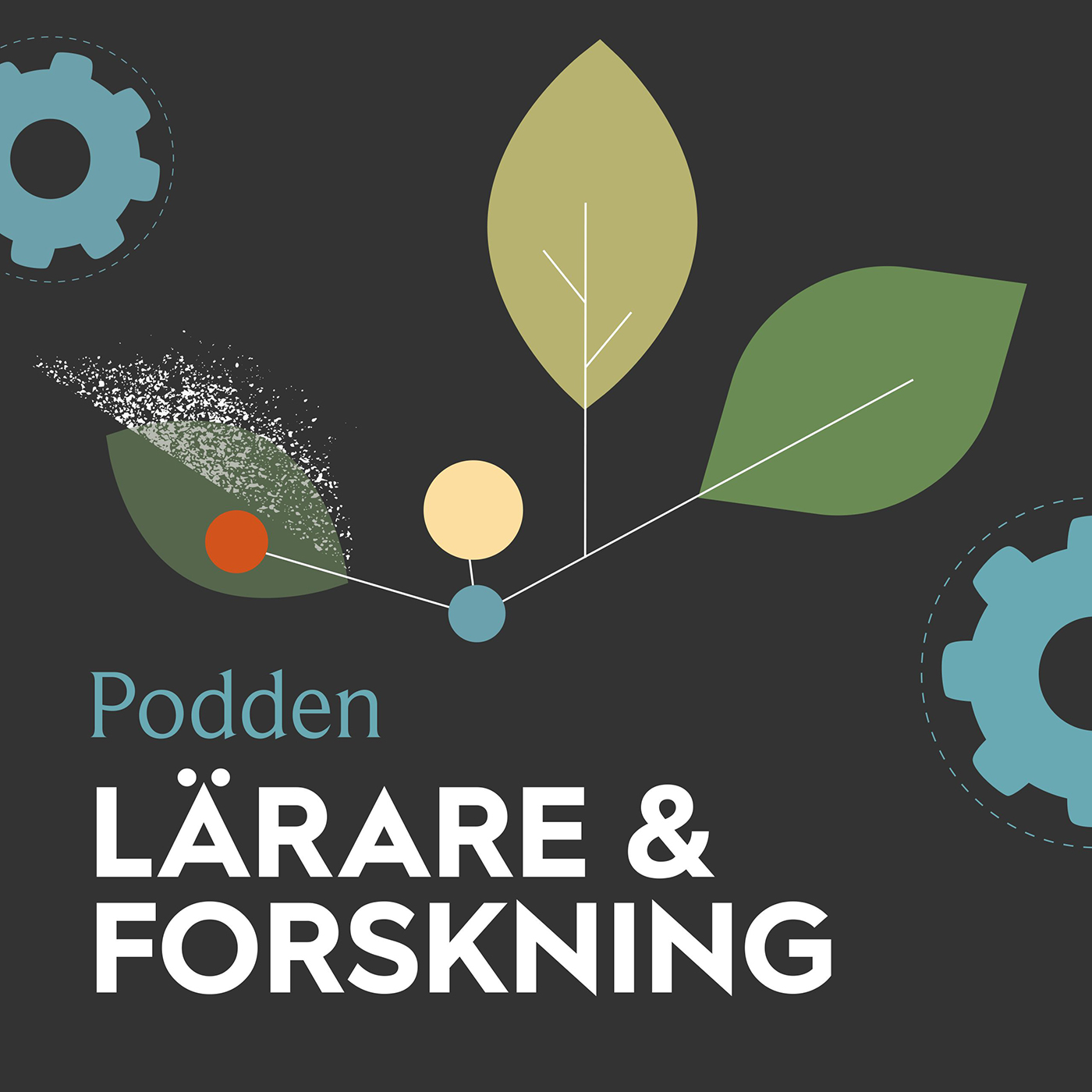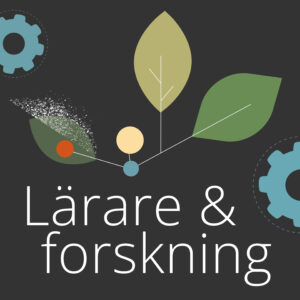Förskollärares resonemang om böckers funktioner i högläsning
DOI:
https://doi.org/10.61998/forskul.v13i1.25855Nyckelord:
boken som funktion och artefakt, fokusgruppsintervjuer, metafor, remediering, förskolaAbstract
Hur förskollärare resonerar kring böckers olika funktioner vid högläsning analyseras. Dessa resonemang – baserade på inspelade fokusgruppsintervjuer – konceptualiseras teoretiskt utifrån ett sociokulturellt perspektiv som (re)mediering konstituerande boken som en särskild typ av artefakt. Denna mediering blir särskilt tydlig i metaforerna i lärarnas resonemang. Resultaten visar att de olika funktioner som ges boken kan sammanfattas i termer av metaforerna: fönster, spegel, generator, punktum och motvikt. Denna repertoar implicerar att låta barnen göra olika typer av erfarenheter och möta olika kunskapsområden och praktiker genom högläsning i förskolan. Studien bidrar med kunskap om hur en expandering av repertoaren av de funktioner böcker och högläsning kan fylla berikar yngre barns utbildning.
Preschool teachers’ reasoning about the functions of books in read- alouds
How preschool teachers reason about the different functions of books in read- aloud is analyzed. These reasonings – based on recorded focus group interviews – are theoretically conceptualized from a sociocultural perspective as (re)mediation constituting the book as a particular kind of artefact. This mediation is particularly evident in the metaphorics of the teachers’ reasoning. The results show that the different functions given the book can be summarized in terms of the metaphors: window, mirror, generator, punktum, and balance. This repertoire implies letting children do different kinds of experiences and encounter different knowledge domains and practices through read aloud in preschool.
Referenser
Alatalo, T., Norling, M., Magnusson, M., Tjäru, S., Hjetland, H. N. & Hofslundsengen, H. (2023). Read-aloud and writing practices in Nordic preschools. Scandinavian Journal of Educational Research, 1–16. https://doi.org/10.1080/00313831.2023.2175243 DOI: https://doi.org/10.1080/00313831.2023.2175243
Alatalo, T. & Westlund, B. (2021). Preschool teachers’ perceptions about read-alouds as a means to support children’s early literacy and language development. Journal of Early Childhood Literacy, 21(3), 1–23. https://doi.org/https://doi.org/10.1177/1468798419852136 DOI: https://doi.org/10.1177/1468798419852136
Altınkaynak, Ş. Ö. (2019). The effect of interactive book reading activities on children’s print and phonemic awareness skills. International Journal of Progressive Education, 15(1), 88–99. DOI: https://doi.org/10.29329/ijpe.2019.184.6
Backman, A. (2018). Med ljus på boksamtal om skugga. [Licentiatuppsats, Göteborgs universitet]. https://gupea.ub.gu.se/handle/2077/58136
Barrentine, S. J. (1996). Engaging with reading through interactive read-alouds. The Reading Teacher, 50(1), 36–43.
Barthes, R. (1967). The death of the author. Aspen Magazine, (5–6).
Barthes, R. (1986). Det ljusa rummet. Tankar om fotografiet. Alfabeta.
Beck, I. L. & McKeown, M. G. (2007). Increasing young low-income children’s oral vocabulary repertoires through rich and focused instruction. Elementary School Journal, 107(3), 251–271. https://doi.org/10.1086/511706 DOI: https://doi.org/10.1086/511706
Bishop, R. S. (1990). Mirrors, windows, and sliding glass doors. Perspectives: Choosing and Using Books for the Classroom, 6(3), ix–xi..
Björk-Willén, P., Simonsson, M. & Pramling, N. (2018). Språkundervisning i förskolan: Teoretiska principer och empiriska exempel. Barn – forskning om barn og barndom i Norden, 36(3–4). https://doi.org/10.5324/barn.v36i3-4.2896 DOI: https://doi.org/10.5324/barn.v36i3-4.2896
Björklund, C. & Palmér, H. (2020). Preschoolers’ reasoning about numbers in picture books. Mathematical Thinking and Learning, 22(3), 195–213. https://doi.org/10.1080/10986065.2020.1741334 DOI: https://doi.org/10.1080/10986065.2020.1741334
Broström, S. (2009). Reading of literature and reflection by means of aesthetical activities. Nordisk Barnehageforskning, 2(2), 13–33. https://doi.org/https://doi.org/10.7577/nbf.347 DOI: https://doi.org/10.7577/nbf.347
Cameron, L. (2003). Metaphor in educational discourse. Continuum.
Cole, M. (1996). Cultural psychology: A once and future discipline. Belknap Press.
Dahlström, H., Damber, U. & Rasmusson, M. (2023). Prerequisites for emergent literacy in Swedish preschools. Early Child Development and Care, 193(13–14), 1417–1433. https://doi.org/10.1080/03004430.2023.2248417 DOI: https://doi.org/10.1080/03004430.2023.2248417
Damber, U. (2015). Read-alouds in preschool: a matter of discipline? Journal of Early Childhood Literacy, 15(2), 256–280. https://doi.org/10.1177/1468798414522823 DOI: https://doi.org/10.1177/1468798414522823
Dowdall, N., Melendez‐Torres, G. J., Murray, L., Gardner, F., Hartford, L. & Cooper, P. J. (2020). Shared picture book reading interventions for child language development: A systematic review and meta‐analysis. Child Development, 91(2), 383–399. https://doi.org/10.1111/cdev.13225 DOI: https://doi.org/10.1111/cdev.13225
Felski, R. (2008). Uses of literature. Blackwell. DOI: https://doi.org/10.1002/9781444302790
Fisher, D., Flood, J., Lapp, D. & Frey, N. (2004). Interactive read-alouds: Is there a common set of implementation practices? Reading Teacher, 58(1), 8–17. https://doi.org/10.1598/RT.58.1.1 DOI: https://doi.org/10.1598/RT.58.1.1
Frejd, J. (2021). Children’s encounters with natural selection during an interactive read aloud. Research in Science Education, 51, 499–512. https://doi.org/10.1007/s11165-019-09895-9 DOI: https://doi.org/10.1007/s11165-019-09895-9
Hansson, L. & Leden, L. & Thulin, S. (2020). Book talks as an approach to nature of science teaching in early childhood education. International Journal of Science Education. 42(12), 1–17. https://doi.org/10.1080/09500693.2020.1812011 DOI: https://doi.org/10.1080/09500693.2020.1812011
Hargrave, A. & Sénéchal, M. (2000). A book reading intervention with preschool children who have limited vocabularies: The benefits of regular reading and dialogic reading. Early Childhood Research Quarterly, 15(1), 75–90. https://doi.org/10.1016/S0885-2006(99)00038-1 DOI: https://doi.org/10.1016/S0885-2006(99)00038-1
Justice, L. M., Kaderavek, J. N., Fan, X., Sofka, A. & Hunt, A. (2009). Accelerating preschoolers’ early literacy development through classroom-based teacher-child storybook reading and explicit print referencing. Language, Speech, and Hearing Services in Schools, 40(1), 67–85. https://doi.org/10.1044/0161-1461(2008/07-0098) DOI: https://doi.org/10.1044/0161-1461(2008/07-0098)
Keene, E. O. & Zimmermann, S. (2007). Mosaic of thought: the power of comprehension strategy instruction. Heinemann.
Lagerlöf, P. (2015). Musical make-believe playing: Three preschoolers collaboratively initiating play ‘in-between’. Early Years, 35(3), 303–316. https://doi.org/10.1080/09575146.2015.1044501 DOI: https://doi.org/10.1080/09575146.2015.1044501
Lakoff, G. & Johnson, M. (1980). Metaphors we live by. University of Chicago Press.
Linell, P. (2009). Rethinking language, mind, and world dialogically: Interactional and contextual theories of human sense-making. Information Age.
Lindström, C., Pramling, N. & Simonsson, M. (2024). Professionell högläsning i förskolan: förskollärares resonemang om en samtida didaktisering. Nordisk barnehageforskning, 21(3), 143–164. https://doi.org/10.23865/nbf.v21.481 DOI: https://doi.org/10.23865/nbf.v21.481
Lyngfelt, A. & Björklund, C. (2023). Estetiken i praktiken: Om relationen mellan estetik och pedagogik vid läsning av Lisen Adbåges Samtidigt som. Barnboken, 46. https://doi.org/10.14811/clr.v46.801 DOI: https://doi.org/10.14811/clr.v46.801
Lyngfelt, A. & Söderberg, E. (2021). Att göra sin röst hörd – en didaktiskt orienterad bilder-boksanalys av Naturen och Mitt bottenliv – av en ensam axolotl. Forskning om undervisning och lärande, 9(3), 28–47. https://doi.org/10.61998/forskul.v9i3.26629 DOI: https://doi.org/10.61998/forskul.v9i3.26629
Maričić S. & Stakić M. (2023). The picture book and its role in preschool mathematics education. Journal of Elementary Education, 16(2), 189–204. https://doi.org/10.18690/rei.16.2.2843 DOI: https://doi.org/10.18690/rei.16.2.2843
Mol, S. E. & Bus, A. G. (2011). To read or not to read: A meta-analysis of print exposure from infancy to early adulthood. Psychological Bulletin, 137(2), 267–296. https://doi.org/10.1037/a0021890 DOI: https://doi.org/10.1037/a0021890
Morrison, V. & Wlodarczyk, L. (2009). Revisiting read-aloud: Instructional strategies that encourage students' engagement with texts. The Reading Teacher, 63(2), 110–118. https://doi.org/10.1598/RT.63.2.2 DOI: https://doi.org/10.1598/RT.63.2.2
Mossberg Schüllerqvist, I. (2008). Läsa texten eller ”verkligheten”? I S. Granath, B. Bihl & E. Wennö (Red.), Fönster mot språk och litteratur (s. 27–38). Centrum för språk- och litteraturdidaktik, Karlstads universitet.
Mäkitalo, Å. (2016). On the notion of agency in studies of interaction and learning. Learning, Culture and Social Interaction, 10, 64–67. https://doi.org/10.1016/j.lcsi.2016.07.003 DOI: https://doi.org/10.1016/j.lcsi.2016.07.003
Nilsen, M., Lundin, M., Wallerstedt, C. & Pramling, N. (2021). Evolving and re-mediated activities when preschool children play analogue and digital Memory games. Early Years, 41(2–3), 232–247. https://doi.org/10.1080/09575146.2018.1460803 DOI: https://doi.org/10.1080/09575146.2018.1460803
Pihl, A. (2022). Children retelling stories: Responding, reshaping, and remembering in early childhood education and care. [Doktorsavhandling, Göteborgs universitet]. http://hdl.handle.net/2077/73699
Pramling, N. (2006). Minding metaphors: using figurative language in learning to represent. [Doktorsavhandling, Göteborgs universitet]. http://hdl.handle.net/2077/16798
Pramling, N. & Säljö, R. (2007). Scientific knowledge, popularisation, and the use of metaphors: Modern genetics in popular science magazines. Scandinavian Journal of Educational Research, 51(3), 275–295. https://doi.org/10.1080/00313830701356133 DOI: https://doi.org/10.1080/00313830701356133
Pramling, N. & Säljö, R. (2015). The clinical interview: The child as a partner in conversations versus the child as an object of research. I S. Robson & S. F. Quinn (Red.), The Routledge international handbook of young children’s thinking and understanding (s. 87–95). Routledge.
Pramling, N., Wallerstedt, C., Lagerlöf, P., Björklund, C., Kultti, A., Palmér, H., Magnusson, M., Thulin, S., Jonsson, A. & Pramling Samuelsson, I. (2019). Play-responsive teaching in early childhood education. Springer. [elektronisk resurs] DOI: https://doi.org/10.1007/978-3-030-15958-0
Santoro, L., Chard, D., Howard, L. & Baker, S. K. (2008). Making the very most of classroom read-alouds to promote comprehension and vocabulary. The Reading Teacher, 61(5), 396–408. https://doi.org/10.1598/RT.61.5.4 DOI: https://doi.org/10.1598/RT.61.5.4
Schmidt, C. (2021). Kulturakuten som en praktikgemenskap kring barnlitteratur : ”Här kommer vi rakt in tillsammans!”. Pedagogisk forskning i Sverige, 26(4). https://doi.org/10.15626/pfs26.04.04 DOI: https://doi.org/10.15626/pfs26.04.04
Schmidt, C. & Hvit Lindstrand, S. (2022). Dialogisk högläsning i förskoleklassen och årskurs 1: ”Jag tycker att molnbullen smakar delikat”. Forskning om undervisning och lärande, 10(1), 78–99. https://doi.org/10.61998/forskul.v10i1.19054 DOI: https://doi.org/10.61998/forskul.v10i1.19054
SFS (2003:460). Lagen om etikprövning av forskning som avser människor. [elektronisk resurs]
Simonsson, M. (2004). Bilderboken i förskolan – en utgångspunkt för samspel. [Doktorsavhandling, Linköpings universitet]. https://liu.diva-portal.org/smash/record.jsf?pid=diva2:244547
Simonsson, M. (2006). Pedagogers möte med bilderböcker i förskolan. Linköpings universitet
Shotter, J. (1993). Conversational realities: Constructing life through language. Sage.
Skolverket. (2018). Läroplan för förskolan: Lpfö 18. [elektronisk resurs]
Solstad, T. (2015). Snakk om bildebøker! En studie av barnehagebarns resepsjon. [Doktorsavhandling, Universitetet i Agder]. http://hdl.handle.net/11250/297392
Stavholm, E., Lagerlöf, P. & Wallerstedt, C. (2022). Re-mediation in early childhood teachers’ reasoning about their role in play: An empirical study of the learning process of a work team. Early Years, 44(2), 341–355. https://doi.org/10.1080/09575146.2022.2131741 DOI: https://doi.org/10.1080/09575146.2022.2131741
Swanson, E., Wanzek, J., Petscher, Y., Vaughn, S., Heckert, J., Cavanaugh, C., Kraft, G. & Tackett, K. (2011). A synthesis of read-aloud interventions on early reading outcomes among preschool through third graders at risk for reading difficulties. Journal of Learning Disabilities, 44(3), 258–275. https://doi.org/10.1177/0022219410378444 DOI: https://doi.org/10.1177/0022219410378444
Säljö, R. (2002). My brain’s running slow today – The preference for “things ontologies” in research and everyday discourse on human thinking. Studies in Philosophy and Education, 21(4–5), 389–405. https://doi.org/10.1023/A:1019834425526 DOI: https://doi.org/10.1023/A:1019834425526
Tjäru, S. (2020). Upprepningar och glada utrop – pedagogers och barns agenda under tre bokstunder i språkbad. BARN - Forskning om barn og barndom i Norden, 38(4), 53–68. https://doi.org/10.5324/barn.v38i4.3994 DOI: https://doi.org/10.5324/barn.v38i4.3994
Tjäru, S. (2023). Bolstering and bridging – Pre-primary teachers’ purposes and views of reading aloud. Nordic Journal of Literacy Research, 9(2), 1–19. https://doi.org/10.23865/njlr.v9.5107 DOI: https://doi.org/10.23865/njlr.v9.5107
Vetenskapsrådet. (2017). God forskningssed. [elektronisk resurs]
Walldén, R. (2021). ”Den här föräldern smörjer tant Mittiprick litegrann” – integrerat läsande och skrivande under ett litteraturarbete i årskurs 3. Forskning om undervisning och lärande, 9(1), 5–30. https://doi.org/10.61998/forskul.v9i1.26902 DOI: https://doi.org/10.61998/forskul.v9i1.26902
Wells, G. (1999). Dialogic inquiry: Towards a sociocultural practice and theory of education. Cambridge University Press. DOI: https://doi.org/10.1017/CBO9780511605895
Wertsch, J. V. (1998). Mind as action. Oxford University Press. DOI: https://doi.org/10.1093/acprof:oso/9780195117530.001.0001
Wertsch, J. V. (2002). Voices of collective remembering. Cambridge University Press. DOI: https://doi.org/10.1017/CBO9780511613715
Wertsch, J. V. (2007). Mediation. I H. Daniels, M. Cole & J. V. Wertsch (Red.), The Cambridge companion to Vygotsky (s. 178–192). Cambridge University Press. DOI: https://doi.org/10.1017/CCOL0521831040.008
Whitehurst, G. J., Falco, F. L., Lonigan, C. J., Fischel, J. E., DeBaryshe, B. D., Valdez-Menchaca, M. C. & Caulfield, M. (1988). Accelerating language development through picture book reading. Developmental Psychology, 24(4), 552–559. https://doi.org/10.1037/0012-1649.24.4.552 DOI: https://doi.org/10.1037/0012-1649.24.4.552
Yurt Tarakçı. Ö., Keleş, S. & Kölemen, E. B. (2020). Preschool teachers' science talks during picture storybook telling. Journal of Baltic Science Education, 19(6), 940–953. https://doi.org/10.33225/jbse/20.19.940 DOI: https://doi.org/10.33225/jbse/20.19.940
Publicerad
Referera så här
Licens
Copyright (c) 2024 Cecilia Lindström, Maria Simonsson, Niklas Pramling

Det här verket är licensierat under en Creative Commons Erkännande 4.0 Internationell-licens.
Författare till innehåll publicerat i Forskul behåller upphovsrätten till sina verk. Artiklar publiceras under villkoren i en Creative Commons-licens CC BY, som tillåter användning, nedladdning, distribution, länkning till och reproduktion i vilket medium som helst, förutsatt att originalverket är korrekt citerat.






